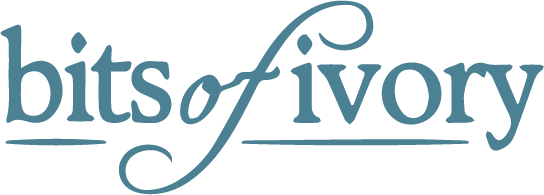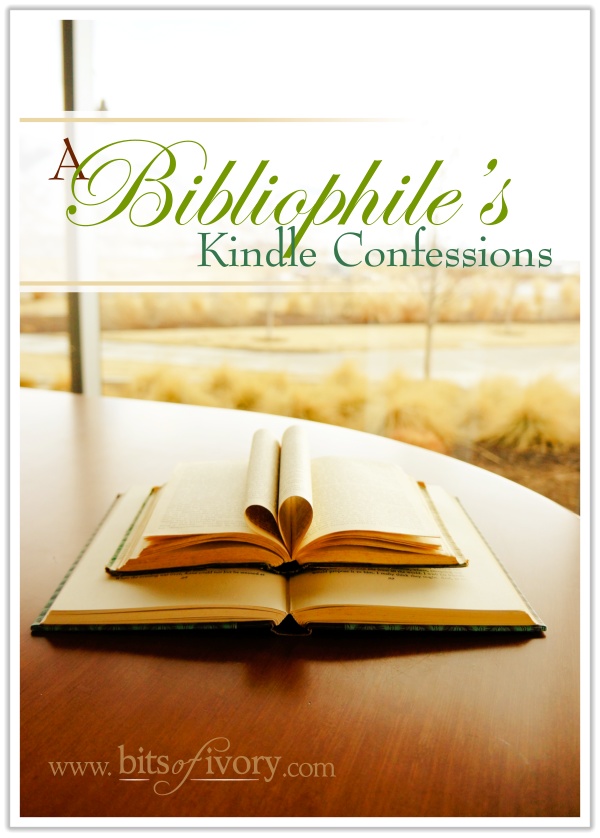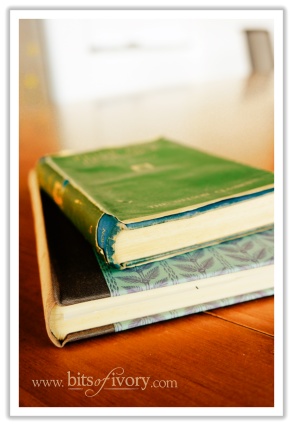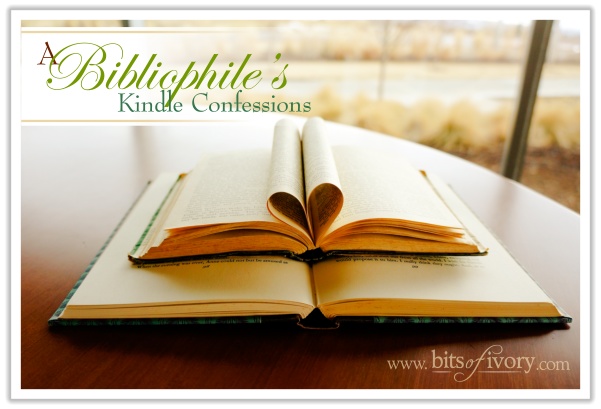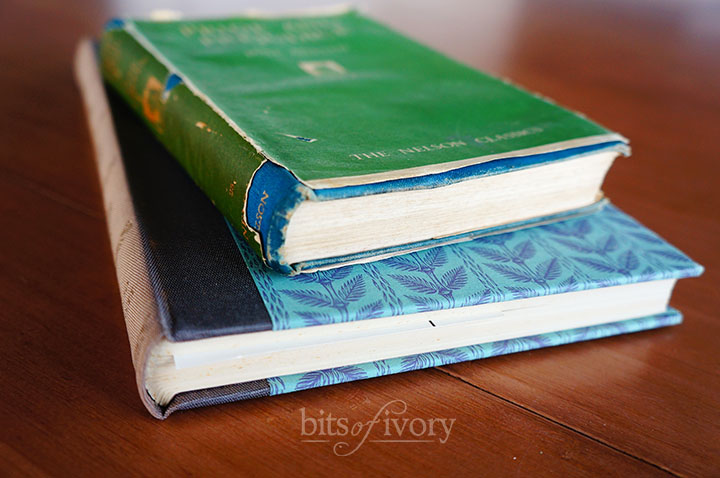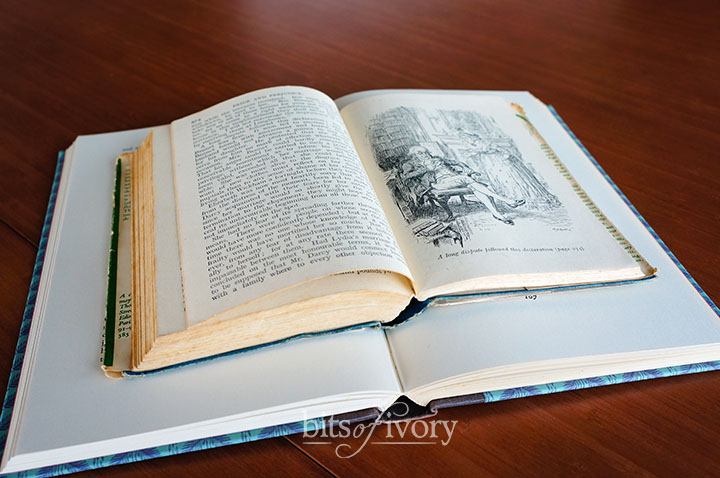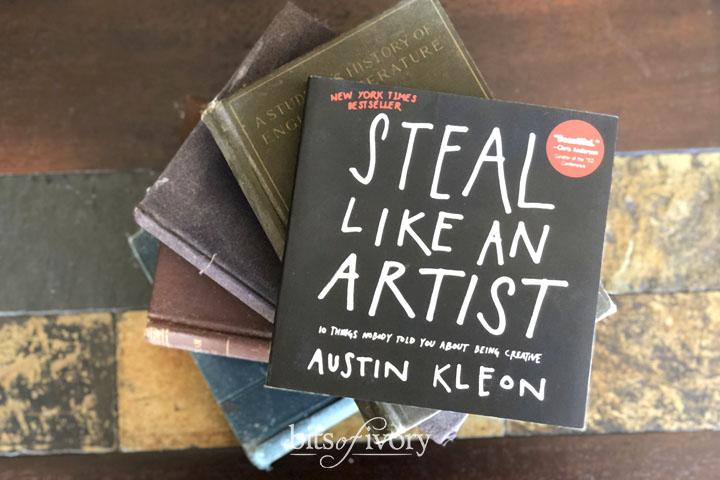It’s no secret that I love books.
My dining room china cabinet is bursting with the beautiful books displayed there while my dishes stay hidden away in a dusty corner cupboard. Other dining room shelves display the overflow, and that’s just one little room.
There’s hardly a room in the house that doesn’t contain a book shelf or stack of old books. There’s also a nice little linen closet downstairs housing those waiting for my next shelf project. Because of that, it’s not surprising to me that one of the questions I’m asked most is how I feel about my Kindle.
My answer? It’s complicated.
For bibliophiles everywhere, the truth is that books are far more than just a collection of words arranged into a delightful story.
Books are beautifully bound concoctions of ink and paper and string and glue. In special cases you’ll find them created from vellum, leather and gilding; and some of the rarest include paints and pigments from ages past.
They are an experience.
Often they are little works of craftsmanship and art.
So what on earth would inspire someone who loves the very bookish nature of books to purchase a digital reader? I asked myself that for years before I was convinced that it would provide its own value. The answer for me was that aside from loving books for their own sake, I also do truly love the stories they house.
In the end, the lure of being able to carry hundreds or even thousands of those stories in the pocket of my handbag was just too great, and my husband purchased one for my birthday.
A few years later I feel qualified to share a few things you may want to consider if you’re thinking of diving into the digital book age.
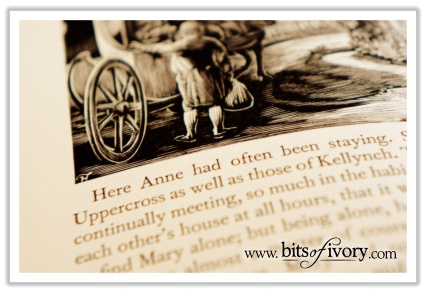
#1 Saving Money – or Maybe Not
Perhaps some people save money with their Kindle. I hoped to. It was one of my biggest reasons in favor of purchasing the Kindle. I do not save money.
While it seems logical that a digital book is much less expensive to “manufacture” than a traditional book, Kindle books are not really very much less expensive than their printed versions. Sometimes they are even more expensive than a new paperback copy of the book, and they nearly always cost more than one that is used.
Add to that the brilliant marketing strategy that gives you the next book in a series (or by an author) in just one click, and I’ve found that impulse purchases are far too enticing. I spend more with my Kindle, and personally don’t feel like it’s always a great value for the dollar (as explained in the following points).
One good thing is that many classics are in the public domain and thus available for free or a very low price (see “quality” and “experience” below for caveats).
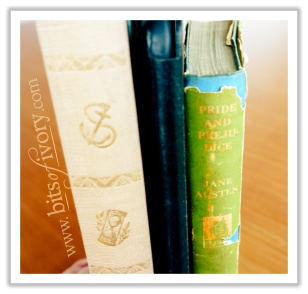
#2 Neither a Borrower or a Lender
When I truly love a book I purchase one lending copy and another for me to keep nearby in case I want to read it while the other is roaming.
When you purchase a Kindle book you can lend that book only once, to one other Kindle reader, and only for two weeks. Ever.
For me that is so restrictive that I don’t consider it at all.
Kindle Prime allows members to borrow one book per month from a list of participating books. If the kinds of books you like to read are on the list, and the other Prime benefits add up to make the membership fee worth it for you, this can be an attractive option. The books I most wanted to read usually weren’t on the list, so I gave it up after the trial period.
A free alternative for borrowing books is through digital libraries. My local library offers some digital books for checkout on Kindles. While selection is improving, it is still very limited and the number of each e-book available is low, which means very long waiting lists for almost everything.
I’ve taken advantage of this option quite a few times, but as a shelf-browser I find it much harder to stumble upon an interesting book on a virtual book shelf than on a physical one. These online libraries would greatly benefit from a system that allows you to see similar books listed from the page of a book you’ve already read.
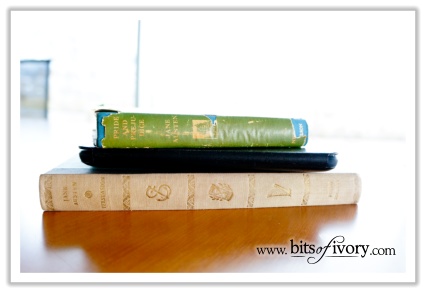
#3 Quality
Publishers seem to take less care with the editing and formatting of digital books. Little errors and typos sneak into printed books too, but these are on an altogether different level – one that can become distracting and make the story difficult to follow. One professionally published book was so bad that I returned it for a refund.
It also pays to be aware that self-published books abound in the Kindle store. Some are really very good, but in every case I’ve personally run into there is a definite difference in polish and flow to the self-published books (just as there is with traditional published and self-published books).
Independent authors can gain a following and get started, which is a fantastic thing. But be aware that sometimes you’ll find a charming story that will captivate you, and other times it will feel a bit more like you’ve paid to read a high school creative writing assignment. Ratings are generally unhelpful in these cases since the first several reviewers are very often friends who adore the author and may not be entirely objective.
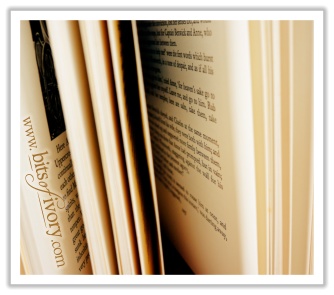
#4 Aesthetics & Experience
Digital readers are sleek and practical. Maybe someone in the world finds them beautiful. I don’t. I definitely wouldn’t decorate with them. Or cherish them. Or pass them down to my grandchildren with my notes scribbled in the margins (a moot point since the Kindle books can’t be given away).
I can’t write a touching dedication in the front when I give them as gifts, and e-reader gift cards aren’t nearly as fun to open on Christmas morning.
Additionally, in a traditional book there’s a feeling of passage of time and space through the story as you turn the pages slowly from front to back. The physical movement through the book mirrors the journey of the story in a way, and makes us more participants than just observers.
Tapping a screen just doesn’t quite provide the same feeling of going somewhere.
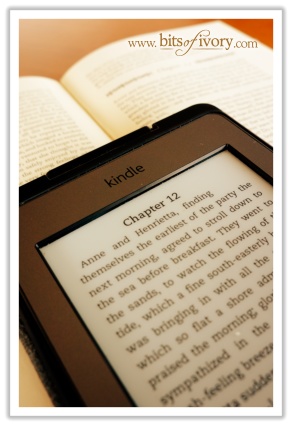
#5 Convenience
Here the Kindle redeems itself. An entire library in a tiny package that can literally fit in my coat pocket? That’s amazing! Spare minutes at the bus stop or on lunch break fill up with literary adventures. I can switch from book to book at will.
It’s quick and easy to change the font size on the Kindle. This is a huge convenience for those who have difficulty reading small print. Though there is more eye fatigue than with ink on paper, my Kindle is far easier on my eyes than a phone or tablet with back light. The reading light built into my case is fantastic for reading in the dark, though it does drain the battery rather quickly.
Perhaps most importantly, I can purchase a book from the cozy chair beside the fireplace and have it in my hands in seconds, without having to go out in a snowstorm (which leads us back to #1, unfortunately). On the other hand, there are no more overdue fines on library books, because they simply disappear when the lending period is over.
And, as my husband no doubt considered when purchasing the Kindle, moving day boxes are much, much lighter.
The truth is that the Kindle can never take the place of books in my heart. It does have its practical place in my life, though, and I can’t help liking it for that.
